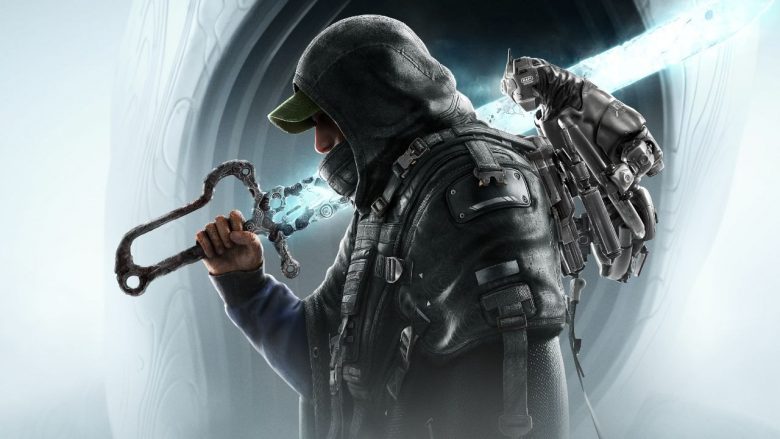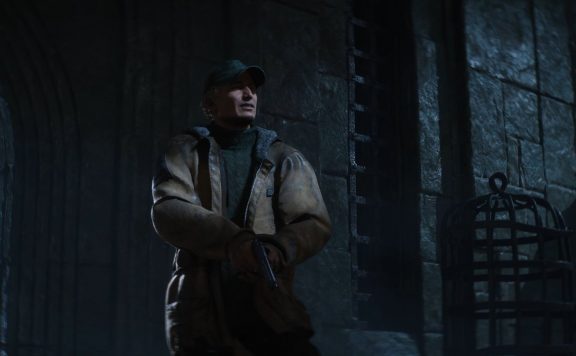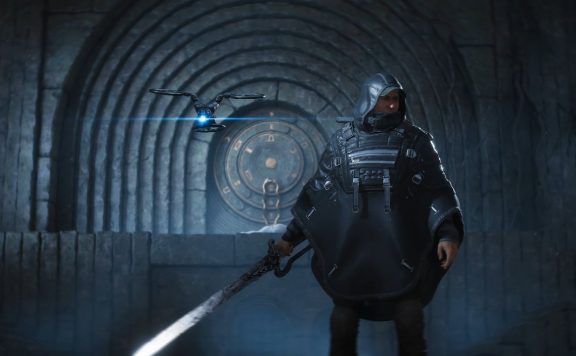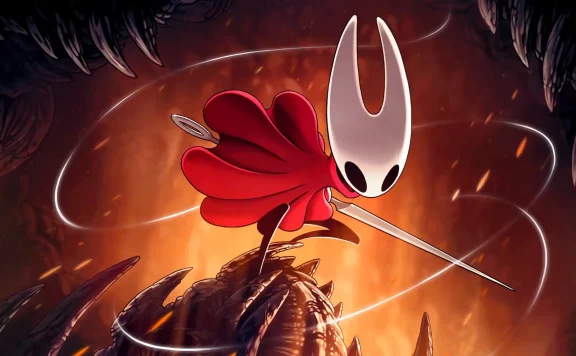Clair Obscur: Expedition 33 is one of the best games to emerge this year, telling an intriguing, compelling story with comparatively little handholding. In a world where developers increasingly spell things out for us like they’re petrified of leaving anyone behind, it was refreshing to play a game where the difficulty lay in navigating the world rather than just memorising attack patterns and remembering which corners are hiding jump-scares. While two games don’t necessarily signal a trend, Hell is Us, from Rogue Factor and Nacon, also refuses to signpost everything. Or anything, actually.
It’s a rare thing to find a game that doesn’t treat gamers like they need to be carefully led from map icon to map icon until the finale. From Software did it with Demons’ Souls and had us all scratching our heads until we learned to rely on landmarks and visual clues, an element they carried through the Dark Souls trilogy but which remains uncommon despite the franchise’s success. If people get lost, they might stop playing, and then they won’t recommend the game to others or, worse, they’ll just review-bomb it. But the complete lack of a real-time map in Hell is Us forces you to do something incredibly unusual: pay attention.
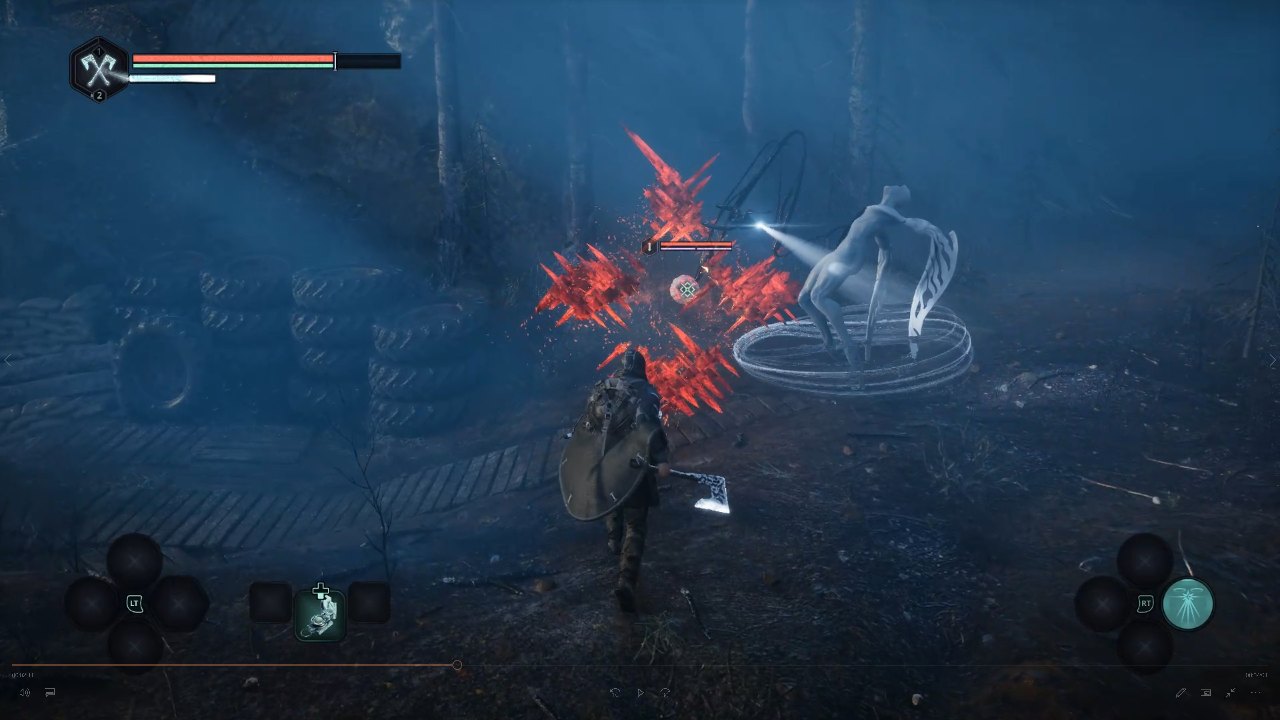
The fictional setting of Hadea is split into a series of open areas filled to the seams with mysteries, which often require you to travel back and forth between them, sometimes abandoning them altogether until the solution presents itself hours later. It’s game design that’s both impeccable and risky, giving you reasons to reach every reachable corner of its world, but which will certainly alienate those of limited patience.
You play as Remi, a dangerous individual who infiltrates the ON (this world’s version of the UN) in order to get into the war-torn country of Hadea, a vaguely Eastern European nation stuck in a bloody civil war and in the throes of a supernatural event called the Calamity. Death and suffering have torn the country apart, and the Calamity has unleashed the Hollow Walkers, otherworldly entities that prey on humanity’s negative emotions. While investigating his own parents, Remi finds himself at the centre of a conspiracy that revolves around an ancient order sworn to defend the world against the Calamity. The story is framed as a series of flashbacks while Remi is interrogated by someone who seems remarkably inhuman, so we’re only given his version of events. Deaths are followed by the instruction to think harder and remember what actually happened.
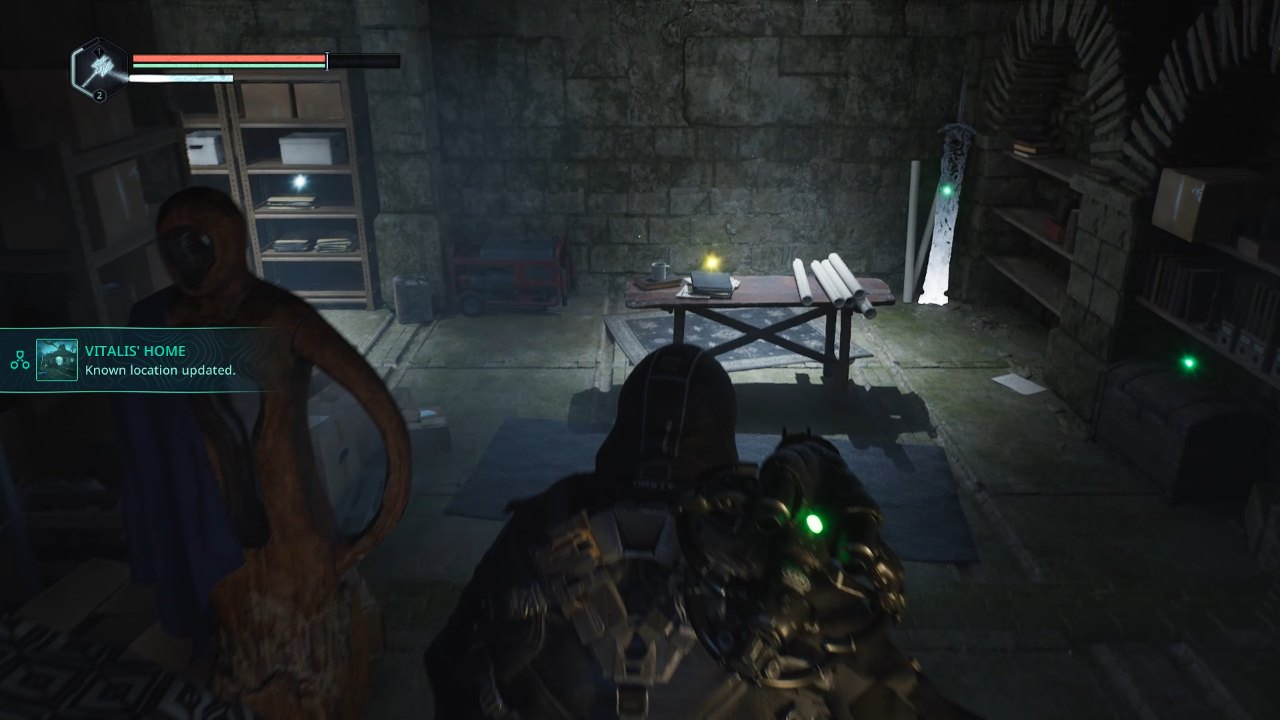
Perhaps most interestingly, Hell is Us is not a Soulslike, not even a little bit. It kind of moves like one, and could certainly fool an onlooker, but it’s more of an adventure. You don’t have limited heals, don’t need specific points to level up, and crucially enemies don’t respawn when you die, save, or fast travel. They do periodically repopulate the areas you’ve cleared, but you can empty whole areas and save, die, or move multiple times before they do so. Of course, if you really want it to be a Soulslike, you can go into the difficulty settings and make it resemble one pretty closely, turning on death penalties, upping the difficulty, and activating enemy respawns.
In the default setting it starts out fairly manageable for the first dozen hours before enemies start to get noticeably tougher, by which time you should have a solid grip on Remi’s strengths and abilities. Hollow Walkers can only be harmed using Lymbic weapons, special tools that react to the emotional power of your enemies. Grief, Terror, Ecstasy, and Rage take the place of the usual colour-coded elements you’d see in action games, and each one shapes the weapons Remi wields differently. I predominantly used twin axes imbued with Terror and a Polearm filled up with Rage, but in the latter game I found I had to switch weapons and defenses to suit my enemies as they became tougher.
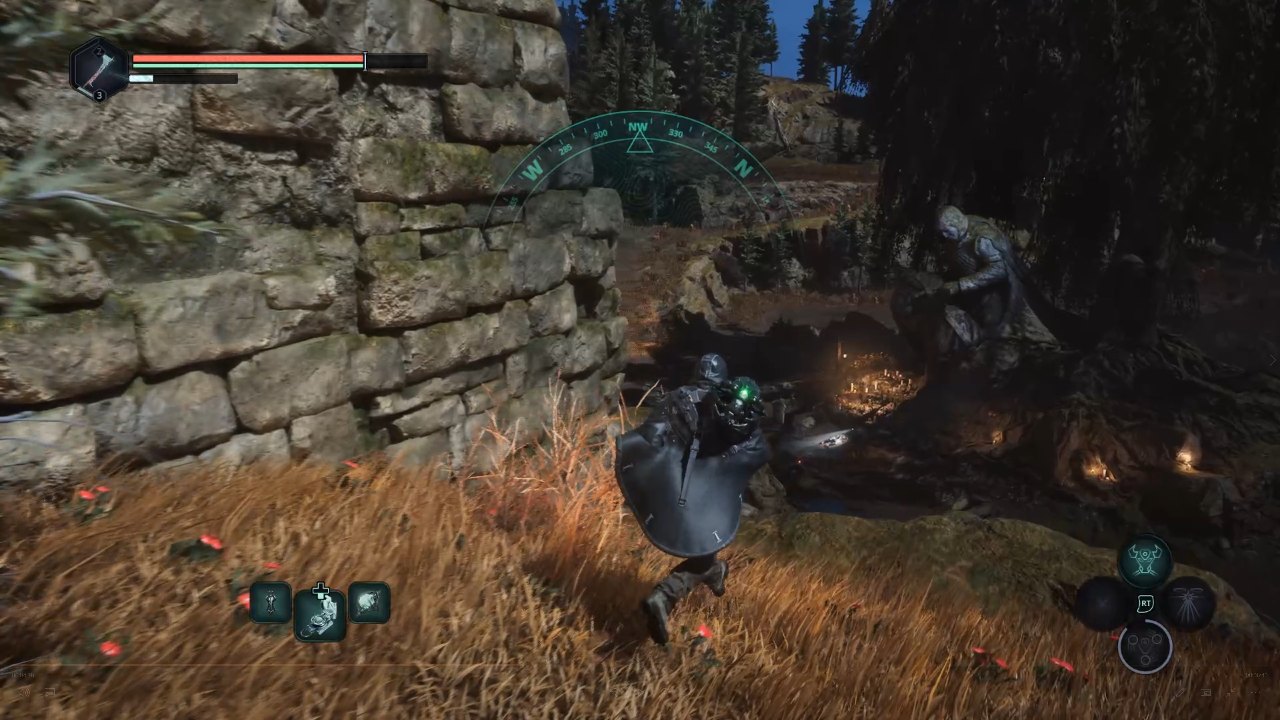
Weapon skills come in the form of Glyphs which you can slot into weapons of the corresponding element, meaning you’ll need multiple versions of each weapon you use. These abilities allow you to unleash powerful AoE attacks, stuns, and violent bursts to subdue the Walkers. There are also Neutral Glyphs, which give you things like shields and a handy healing spell that draw on your weapon’s Lymbic energy reserves (like mana, I guess).
On the other hand you have Remi’s drone, something that seems incredibly advanced for the game’s supposedly 90s-era setting. This handy little fella not only helps you to scan and decipher ancient texts, but allows various NPCs to communicate with you, and can also aid you in combat. Equipping it with Modules allows it to do some crazy stuff, like lifting Remi up for a deadly drop attack, or distracting individual enemies so you can focus them down. Walkers emitting lights of one colour or another will contain one or more anomalous entities that you’ll need to destroy before dealing with the Walker itself. You don’t need to have weapons of a corresponding colour, but it helps.
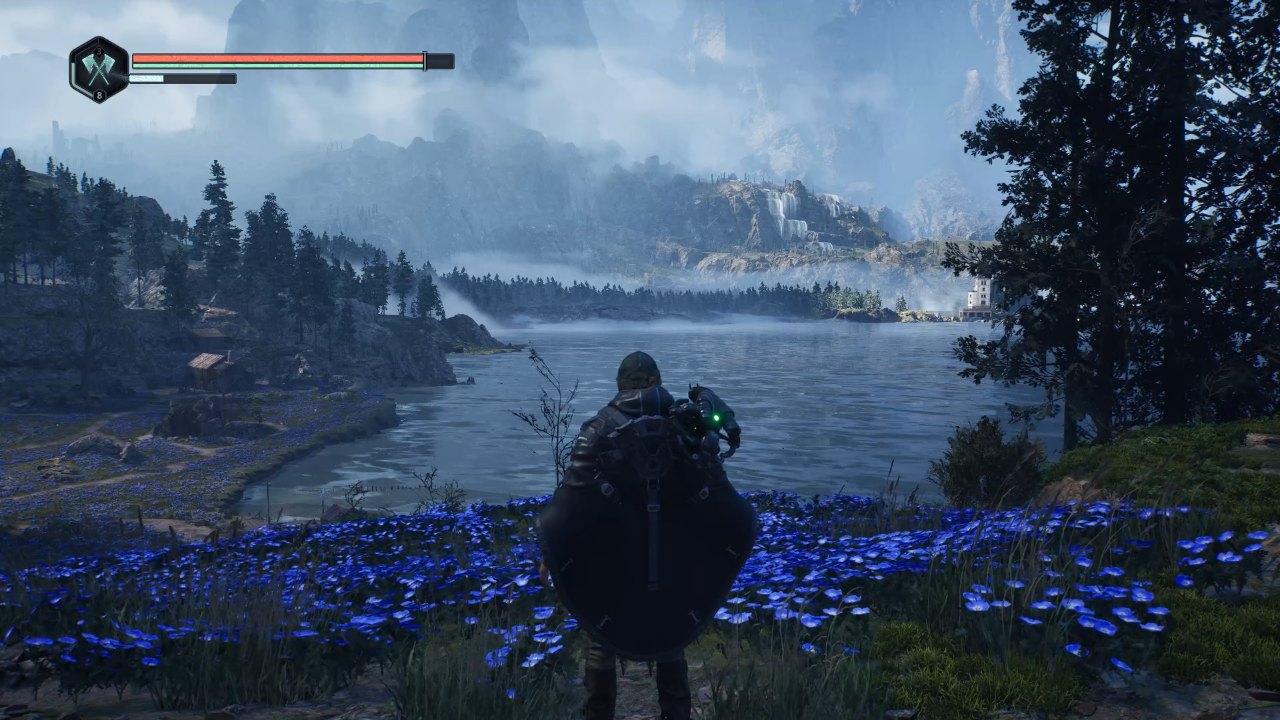
Combat starts off fairly easy, but becomes much tougher later as enemies get bigger, more plentiful, and often spawn two or more entities. Remi’s stamina and health are tied together into a single stat called Endurance, which means the less health you have, the less stamina you have to deal damage, block, and dodge. It’s a clever system, balanced out with a pulse healing system that lets you recover greyed-out health with a timely click of the right bumper. With the right timing, it’s possible to stay healed up without ever using items or spells. There’s no XP levelling here outside of Remi’s weapons growing in strength and power. There are no skill trees or stats to inflate, just a few items to equip and the aforementioned Glyphs, which do increase in tier as you progress.
But combat is only one facet of Hell is Us, and given that enemies don’t regularly respawn, it doesn’t feel like the focus. Instead, the primary drive is exploration and discovery. No maps, mission markers, or detailed quest logs mean you need to pay attention to everything, check every corner and alcove, listen to what people say and, frankly, keep notes. I filled pages of a notebook while I played, noting the location of special chests that require specific combinations of Lymbic rods to open, or even of mysteries I wasn’t equipped to solve right away. Sometimes I spent too long on one mystery only to give up and find the solution accidentally hours later in another area.
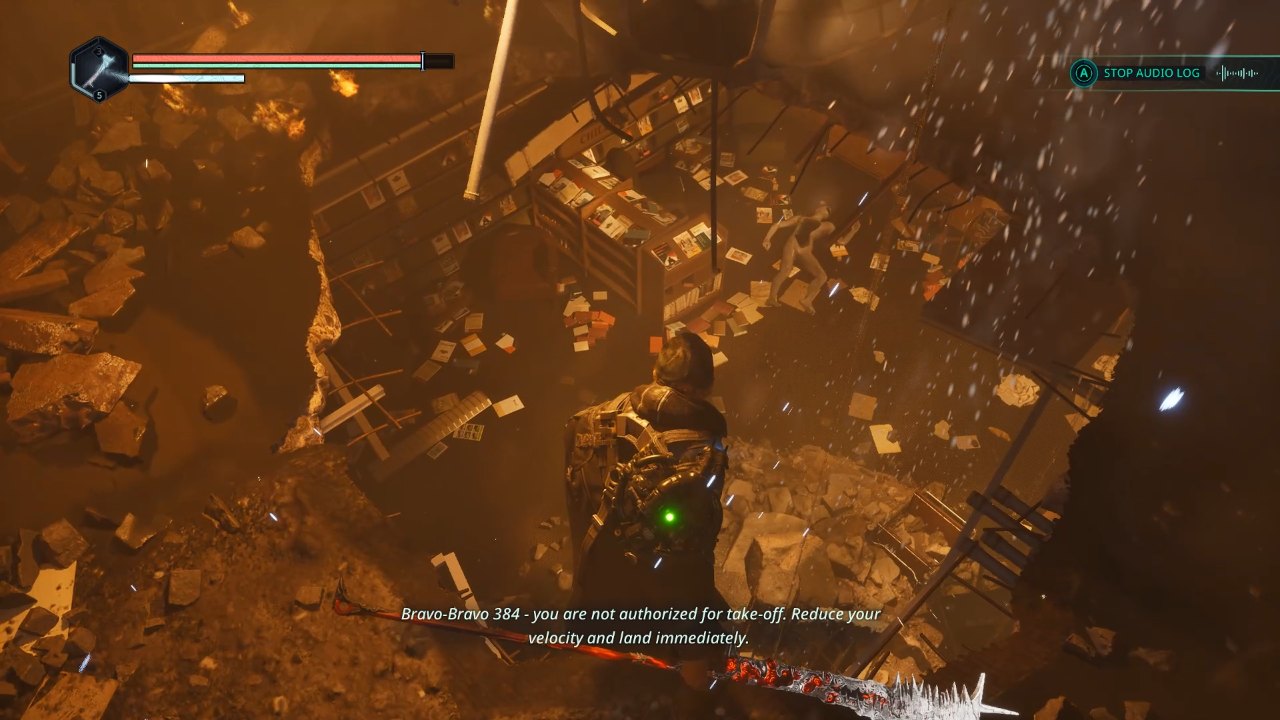
A journalist named Tania provides a lot of support for Remi, researching things he finds to learn more about the areas of Hadea and unlock hidden vaults of knowledge, while helping the ancient order of the Vigil will see you completing “good deeds” for people and closing anomalous timeloops. While these activities offer great rewards, the former are something special. Around Hadea you’ll find the beaten, downtrodden, and suffering. Refugees hiding from invading Sabinian soldiers, families scattered by war, and Hell is Us does not shy away from showing the horrific side of war. There’s some imagery in this game that will be hard for some people to look at, and may even be triggering, but it certainly pulls no punches. It’s because of this that performing good deeds for the people feels like its own reward, giving you a warm little glow inside knowing you saved a baby from starvation, or reunited a family. You don’t have to do any of it, but I’d implore you to get involved.
Remi himself (voiced by Elias Toufexis) is a surly character and it took me a while to warm to him. He’s fairly atypical, being a gruff military type with a troubled past, but he’s revealed early on to be a high-functioning sociopath driven by his own moral compass. He came to Hadea looking for answers to his mysterious past, particularly the whereabouts of his mother, but in working with Tania and helping the people of his tormented homeland, he slowly begins to thaw. It helps that the story is clearly told and soon gives you blatant objectives and leads to follow, even if it doesn’t float quest markers all over the HUD. There’s also no white or yellow paint. If there’s a ladder you need, you’ll have to look for it.
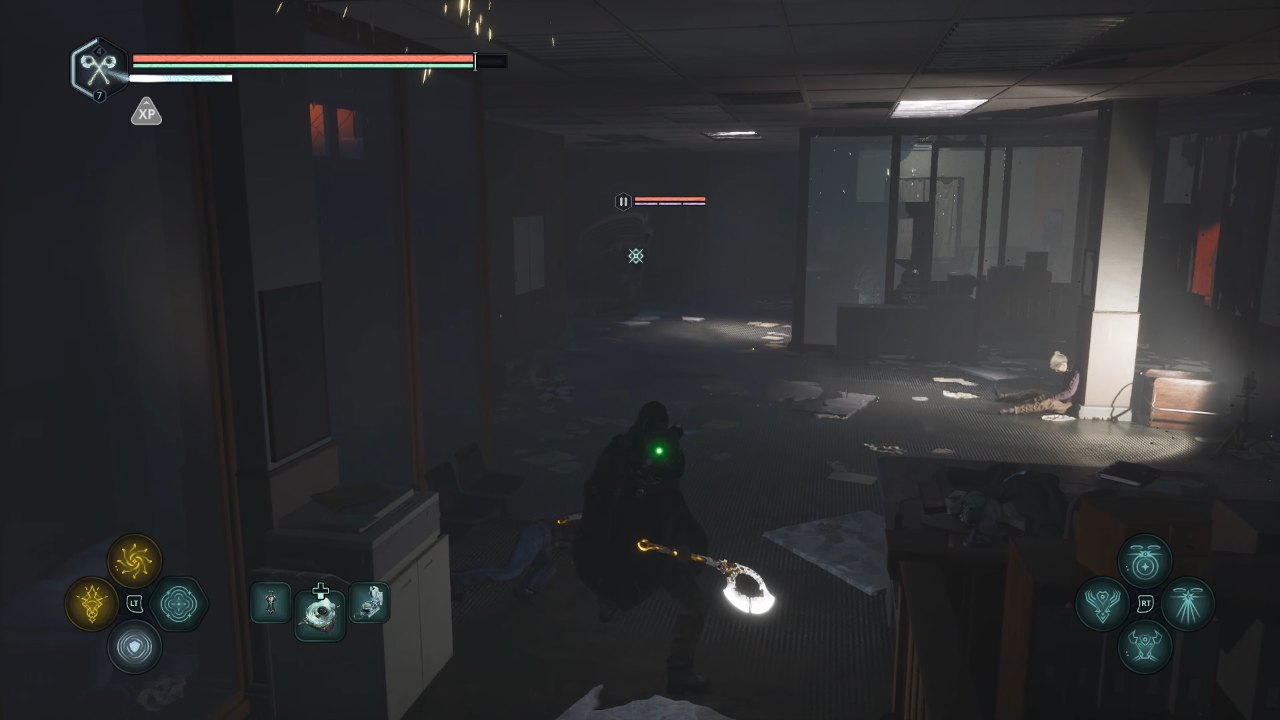
Hell is Us is a rare kind of game that reminds me of titles like Resident Evil 2 and Remnant: From the Ashes, giving you worlds to explore and puzzles to solve that don’t have clear and obvious solutions. Several puzzles took me upwards of 30 minutes to get my head around, while coming upon something in one area that I clearly recognised as an item I needed two hours prior made me feel like I’d overcome something. I like a game that makes me feel smart without being patronising, and Hell is Us does exactly that. Those of you who feel adverse to getting a notepad and pen out as you play may take umbrage with some of the design decisions here, and I don’t blame you, but for me this element took me back to a pre-internet childhood spent trying to decipher conundrums on scraps of paper.
It’s a good-looking game, too, with a variety of locations including a glimmering lakeside, mist-shrouded ruins, a smoke-wreathed, shell-shocked town, and a library in flames. Intricate dungeons, also filled with mysteries, secrets, and loot, are dotted around the world, some story-related and some not. Hell is Us is a game filled with things to do and find, without just spraying icons all over a world map and having you zip around between distractions from the plot. There’s fast travel facilitated by an APC, but it’s limited to dropping you in a central location in each area. You can travel back to it via most save points, but that’s the extent of the fast travel system. You’ll need to run around a lot, which helps you learn the lay of the land and find things you missed on the first few passes.
Arguably, Hell is Us asks too much of the casual gamer. I don’t mean that as an insult, either, but simply as an observation of this modern world where the internet solution is a few thumb-taps away and many won’t bother committing to the mysteries Rogue Factor presents. But perhaps that’s not all on the player – after all, some will find the act of reaching for a pen and paper every five minutes a huge hit to the immersion, when other games have more elegant in-game solutions. Remi could simply keep a notebook, or annotate a map, and you’d get the same effect but entirely in-universe, and there were times when I really wished they’d allowed this.
That said, Rogue Factor have created something truly special in Hell is Us. You can spend endless hours here picking away at each area and still find things to puzzle you, and the story told through interactions with people and well-animated cutscenes is never less than compelling. The central mystery dragged me on, preventing me from wasting too much time struggling with puzzles because I was hungry for answers. It repeatedly made me feel clever, even if a lot of its head-scratchers share DNA with Resi’s convoluted emblem puzzles, and the combat is fun and challenging without punishing you for the sake of it. In a year of surprise hits, I’m happy to add Hell is Us to the same pile as Expedition 33 and The First Berserker: Khazan as another unexpected treasure.
